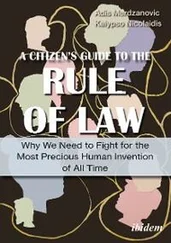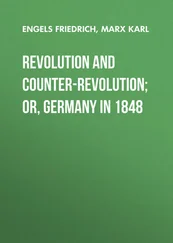Cons — Crowned himself dictator after the war.
General Hans Kundt— Bolivia’s secret weapon, known by the clever nickname of “el Aleman” — the German — because he was from Germany. Kundt, a German staff officer, first went to Bolivia in 1911 to help build the army and returned there after World War I to moonlight as army commander. In 1930, however, he fled Bolivia after a coup knocked him and his presidential ally from office. Then, with his adopted land of the perpetual dictator in trouble against Paraguay, he became “Das Ringer” who returned from exile and in 1933 brought Bolivia to the brink of victory.
Skinny — He fought under the Kaiser in World War I, rising to the rank of brigadier general.
Props — He came from Germany where they know how to fight wars.
Pros — Willingly returned to Bolivia. Reason for Bolivians to cheer.
Cons — Often confused Bolivia with Bavaria and vice versa.
War has been a mixed blessing for both Bolivia and Paraguay. On one hand, both fought bitter and calamitous wars that left them devastated. On the other, the wars are the main reason outsiders read about the two countries.
Paraguay, led by its feckless dictator, Francisco Solano López, and his beautiful but venomous mistress, the Irish-born and Parisian-trained lovelady, Eliza Lynch, started a war against Brazil, Argentina, and Uruguay in 1865. The war came to an end in 1870 when the Brazilians shot López on a river-bank and forced Lynch to bury him in a shallow grave. A few years later Bolivia joined Paraguay in the loser’s bracket. Bolivia started an ill-advised war over birdshit profits with Chile and resulted in a crushing, smelly defeat outdone in stupidity only by their Peruvian allies, who continued on long after the war was lost. The war left Bolivia landlocked and burning with a deep desire to extract revenge on somebody, anybody, most likely a neighbor it had not yet fought a war against.
By the 1920s, it became clear to both countries’ dictators du jour that their only chance to drink from the sweet cup of military victory was beating up the other. Each country simultaneously arrived at the same conclusion: We can take them . To top it off, both countries had found the perfect reason to fight a meaningless war: the same perfectly meaningless piece of land.
This is called the Chaco. Few have heard of it. Fewer have been there. And even fewer stayed. No one has ever reported enjoying it. Located in the center of South America, the Chaco consists of hot, steamy swampland in the summer and dry desert in the winter — and somehow manages to incorporate the worst of both. It’s a vast, flat homeland for an army of ants, piranhas, jaguars, snakes, spiders, and horrible-smelling air. Those who’ve been there nostalgically describe it as a green hell. Its few inhabitants are Indians apparently unaware that other members of the human race spend their days without being surrounded by terrorizing clouds of oversized flies and belligerent mosquitoes. Adding to the other charms of the Chaco is its lack of water. Plenty exists to support vast mosquito swarms, but not enough for humans. Water holes are miles apart and are often not sufficient to sustain large numbers of people. To fight in the Chaco, armies needed to first think about water.
Bolivia had a reason to control sections of the Chaco. The landlocked country had no hope of gaining access to the ocean through its archenemy Chile, so it looked east. By taking the Chaco they would obtain access to the Atlantic through a series of rivers. For their part, equally landlocked Paraguay wanted the Chaco to expand its harvest of the quebracho tree, whose bark yielded valuable tannins, one of the country’s few exports.
On a deeper level, however, were the feelings held by both countries’ leaders that this was a chance they could not afford to lose. Bolivians were tired of being pushed around by their more powerful neighbors and to accept anything less than total control of the Chaco was too much even for them. Getting manhandled by Chile was not fun but understandable. Getting pushed around by Paraguay would be too humiliating to consider. Paraguay held similar but more desperate feelings. After suffering its devastating defeat in the war of the triple beating, the country was on trigger alert for any neighborly aggression. Showing weakness would leave the country vulnerable to attack and dismemberment, ending its extended experiment in isolated poverty. Like a small, wounded animal, Paraguay needed to be tough and vigilant at all times.
The tension between Paraguay and Bolivia escalated over the decades, and by the 1920s the drumbeat of failure in both countries ratcheted up the pressure. Clearly something big was going to happen. Skirmishing broke out. Army raids back and forth kept everyone on edge. Diplomatic relations broke off, only to be reestablished months later. Each held back from attacking only because they lacked any semblance of a functioning military.
On paper, Bolivia held a huge advantage in the coming fight. Its population was about three times Paraguay’s and its potential army equally bigger. Plus, Bolivia had a thriving tin exporting business, producing a strong income stream for the country. Paraguay exported only tea and unskilled workers.
To prepare for the coming conflict, the combatants went on buying sprees. In 1926, Bolivia contracted with a British firm for a large shipment of warplanes, artillery, small arms, and mounds of ammunition. But they never got the full shipment of weapons (possibly because they never paid in full), and what they did receive often didn’t work. These minor details failed to discourage the wound-up Bolivians. They didn’t fully appreciate that unpaid-for weapons sitting in warehouses in Great Britain can’t help win wars.
In addition, Bolivia’s neighbors had blocked most of the arms shipments, so Bolivia’s only option was to ship the arms through the ports of former ally-in-failure Peru, where the sticky-fingered locals helped lessen the Bolivian carrying burden. A trickle of arms flowed through Brazil to the Bolivian town of Puerto Suarez, but the Bolivian transportation system was so primitive there was no way of moving these arms to the fighting troops. Alas, the tricky life of the landlocked and unloved.
The Bolivians went to war without most of the arms they thought would help them win. They had other problems as well, geography being the foremost. Most of the country’s population resided much farther to the west in the Altiplano around the capital of La Paz. To move troops and equipment to the front meant a two-day trip by road or rail, then a long walk on unpaved, dusty roads for days and days. Trucks tried to make the route, but they quickly wore out in the extreme heat and dust. A shortage of spare parts and mechanics forced the Bolivians to abandon them. No bridges were ever built over the rivers, and everything had to cross on pontoon bridges. The politicians talked tough in working up the people for war, but they never put in the hard work necessary to make any attack successful. The army broke down and rusted by the side of the road.
Paraguay went on a similar weapons-buying spree but with greater success. Starting in the early 1920s, the Paraguayans devoted a large chunk of their meager national treasure to arms purchases. They sent agents throughout Europe looking for deals and spread the buying over many countries. This enabled them to force arms companies to compete against each other on price and quality. The buyers even snagged two important and first-rate river gunships. In addition, Argentina, concerned with Bolivian aggression, allowed the arms to flow through the country to Paraguay and provided secret arms shipments themselves. Paraguay also had a significant advantage due to its actual working transportation system. Soldiers and equipment traveled by river to the Chaco and then by train to the front.
Читать дальше












